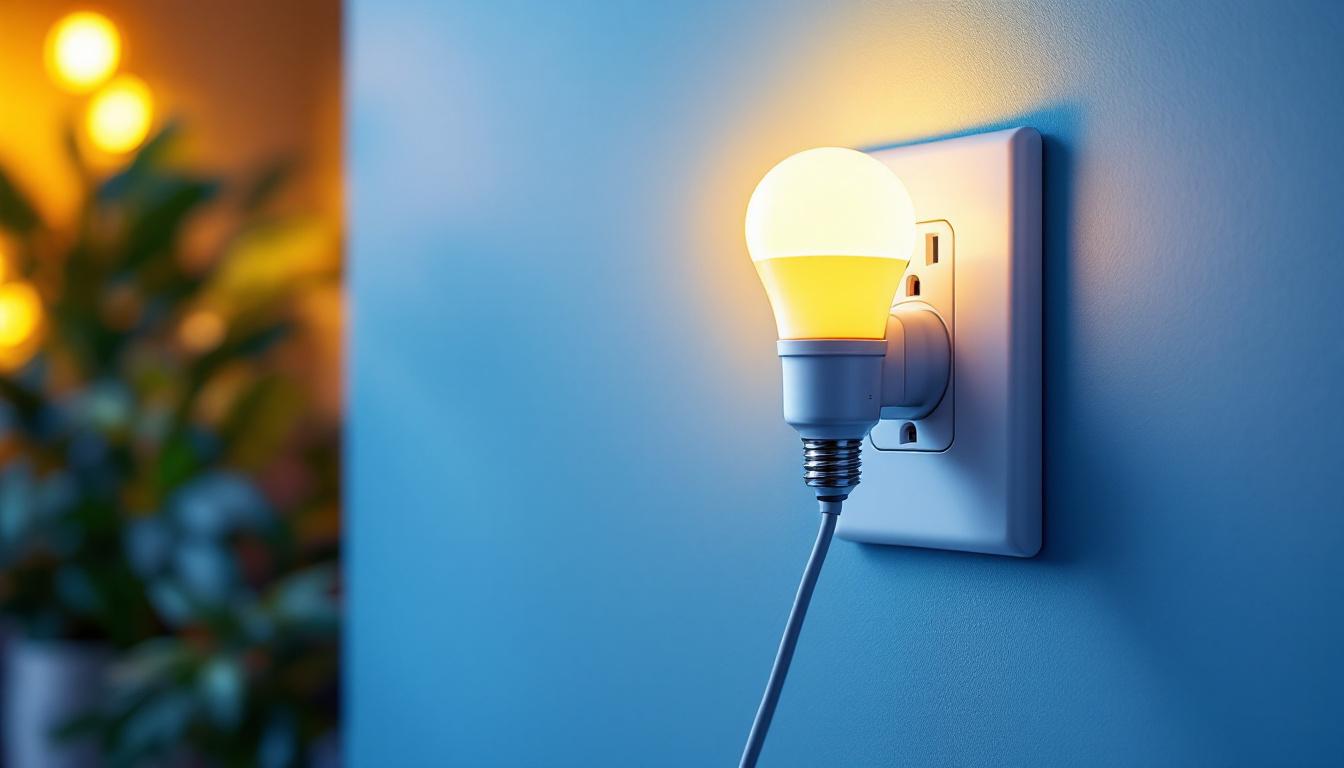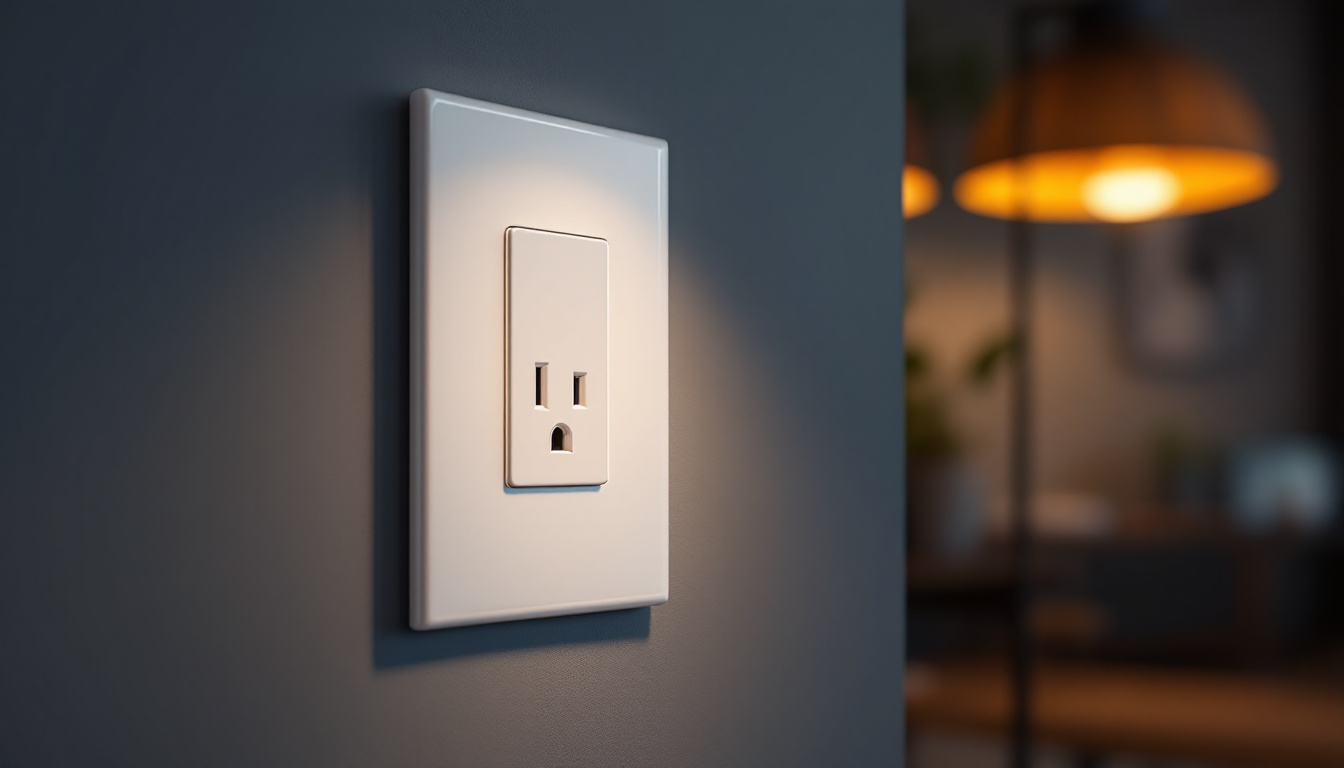
In the realm of lighting design and installation, understanding the fundamentals of wall electrical outlets is crucial for achieving energy efficiency. As a lighting contractor, the ability to integrate outlets effectively can enhance the performance of lighting systems while also promoting sustainability. This article delves into the importance of wall electrical outlets, their impact on energy-efficient lighting solutions, and best practices for installation and usage.
Wall electrical outlets serve as the primary interface between electrical systems and lighting fixtures. They provide the necessary power supply for various lighting solutions, from traditional incandescent bulbs to modern LED systems. Understanding their role is essential for optimizing energy efficiency and ensuring a seamless installation process.
At the core of any lighting system is the need for a reliable power supply. Wall electrical outlets are designed to distribute electricity to various fixtures, allowing for flexibility in lighting design. By strategically placing outlets in key locations, contractors can ensure that lights are easily accessible and can be turned on or off without hassle.
Moreover, the distribution of power through outlets can significantly influence the overall energy consumption of a space. By utilizing outlets effectively, contractors can minimize energy waste and enhance the performance of lighting systems, contributing to a more sustainable environment. For instance, placing outlets near seating areas or workspaces can facilitate the use of task lighting, which not only improves visibility but also allows occupants to tailor their lighting to specific needs, thereby reducing reliance on overhead lights.
With the rapid advancement of lighting technologies, it is essential to ensure that wall electrical outlets are compatible with various systems. Modern LED fixtures, for instance, often require specific types of outlets or adapters to function optimally. Understanding these requirements can prevent installation issues and enhance the overall efficiency of the lighting design.
Additionally, some outlets are equipped with smart technology capabilities, allowing for remote control and automation of lighting systems. This compatibility not only improves user convenience but also promotes energy savings by enabling users to manage their lighting more effectively. For example, smart outlets can be programmed to adjust lighting based on the time of day or occupancy, ensuring that lights are only used when needed. Furthermore, integrating wall outlets with home automation systems can create a cohesive environment where lighting complements other elements, such as security and climate control, enhancing both functionality and comfort in residential and commercial spaces.
In an age where sustainability is a priority, the role of wall electrical outlets in promoting energy efficiency cannot be overstated. By optimizing the use of outlets, contractors can contribute to reducing energy consumption and minimizing the carbon footprint of lighting installations.
One of the most effective ways to enhance energy efficiency is by selecting energy-efficient lighting fixtures that are compatible with wall electrical outlets. LEDs, for example, consume significantly less power compared to traditional incandescent bulbs, making them an ideal choice for energy-conscious installations. By encouraging clients to invest in such fixtures, contractors can help reduce overall energy costs and promote sustainable practices.
Additionally, integrating dimmer switches and occupancy sensors with wall outlets can further enhance energy efficiency. Dimmers allow users to adjust the brightness of lights according to their needs, while occupancy sensors automatically turn lights off when a room is unoccupied. These features not only extend the lifespan of lighting fixtures but also contribute to significant energy savings. Moreover, the use of timers can also play a crucial role in energy management, enabling users to set specific times for lights to turn on and off, thus ensuring that energy is not wasted during hours when illumination is unnecessary.
Smart lighting solutions are becoming increasingly popular due to their ability to provide enhanced control and energy efficiency. Wall electrical outlets that support smart technology can be integrated with various devices, allowing users to manage their lighting systems through smartphones or voice-activated assistants. This level of control enables users to optimize their lighting usage based on their preferences and routines.
Furthermore, smart lighting systems can provide valuable data on energy consumption, allowing contractors and clients to make informed decisions about their lighting usage. By promoting these solutions, contractors can position themselves as leaders in the energy-efficient lighting market. The integration of smart technology not only enhances convenience but also encourages users to adopt more sustainable habits, such as scheduling lights to mimic natural daylight patterns, which can positively impact mood and productivity. As smart home technology continues to evolve, the potential for innovative features—such as automated color temperature adjustments based on the time of day—further emphasizes the importance of wall outlets that can accommodate these advancements, ensuring that energy efficiency remains at the forefront of modern electrical design.
Proper installation of wall electrical outlets is crucial for ensuring safety and functionality. Following best practices not only enhances the performance of lighting systems but also minimizes the risk of electrical hazards.
Compliance with local electrical codes and standards is essential when installing wall electrical outlets. These regulations are designed to ensure safety and reliability in electrical systems. Contractors should familiarize themselves with the relevant codes to avoid potential issues during inspections or future maintenance.
Additionally, using high-quality materials and components can significantly impact the longevity and performance of outlets. Investing in reputable brands can reduce the likelihood of malfunctions and ensure that outlets can handle the demands of modern lighting systems.
The placement of wall electrical outlets is critical for maximizing their effectiveness. Outlets should be positioned in areas where lighting fixtures are most needed, such as near workspaces, living areas, and outdoor spaces. This strategic placement not only enhances convenience but also encourages the use of energy-efficient lighting solutions.
Moreover, considering the layout of the space can help contractors determine the optimal number of outlets required. Overloading a single outlet can lead to safety hazards, so distributing the electrical load across multiple outlets is advisable. This approach not only improves safety but also enhances the overall performance of the lighting system.
While integrating wall electrical outlets into lighting designs can yield significant benefits, several challenges may arise during the process. Identifying these challenges and implementing effective solutions is essential for successful installations.
In many cases, contractors may encounter existing electrical infrastructure that does not align with modern lighting requirements. This can pose challenges when integrating new outlets or upgrading lighting systems. Conducting a thorough assessment of the existing wiring and outlet configurations can help identify potential issues early in the process.
In situations where existing outlets are inadequate, contractors may need to rewire or add new circuits to accommodate energy-efficient lighting solutions. While this may require additional time and resources, the long-term benefits of improved energy efficiency and functionality are well worth the investment.
Another challenge in outlet integration is ensuring that clients understand how to use and maintain their lighting systems effectively. Providing clear instructions on the operation of outlets, especially those with smart technology, can empower clients to make the most of their lighting solutions.
Additionally, offering maintenance services or guidance can help clients address any issues that may arise post-installation. This proactive approach not only enhances client satisfaction but also fosters long-term relationships, positioning contractors as trusted experts in the field.
As technology continues to evolve, the role of wall electrical outlets in lighting design will undoubtedly change. Staying abreast of emerging trends and innovations is essential for contractors looking to remain competitive in the industry.
One significant trend in the lighting industry is the integration of renewable energy sources, such as solar power, into electrical systems. Wall electrical outlets may evolve to accommodate these technologies, allowing for more sustainable lighting solutions. Contractors should consider the implications of renewable energy integration when designing lighting systems, as it can significantly impact energy efficiency and cost savings.
Moreover, as battery technology advances, the potential for wireless lighting systems powered by rechargeable batteries may become more prevalent. This shift could lead to new outlet designs that cater to these innovative solutions, further enhancing the versatility of lighting installations.
The rise of smart home technology is reshaping the way consumers interact with their lighting systems. Wall electrical outlets will likely play a pivotal role in this transformation, serving as the backbone for smart lighting solutions. Contractors should be prepared to integrate outlets with various smart devices, ensuring compatibility and functionality across different systems.
As automation becomes more prevalent, the demand for outlets that support advanced features, such as scheduling and remote access, will increase. Staying informed about these trends will enable contractors to offer cutting-edge solutions that meet the evolving needs of clients.
Wall electrical outlets are a fundamental component of energy-efficient lighting systems. Their role in power distribution, compatibility with modern technologies, and potential for promoting sustainability cannot be overlooked. By understanding the intricacies of outlet integration, lighting contractors can enhance their installations, provide superior service to clients, and contribute to a more energy-efficient future.
As the industry continues to evolve, embracing best practices, addressing challenges, and staying informed about emerging trends will be crucial for success. By prioritizing wall electrical outlets in lighting design, contractors can ensure that their projects not only meet current demands but also pave the way for a sustainable and efficient future.
Ready to elevate your lighting installations with energy-efficient solutions that don’t compromise on quality or cost? At LumenWholesale, we specialize in providing contractors with spec-grade lighting products that meet the highest industry standards. Our commitment to affordability and convenience means you can access a vast selection of premium lighting options at wholesale prices, with the added benefit of free shipping on bulk orders. Don’t let inflated markups dim your project’s potential. Choose LumenWholesale for the best value in lighting supplies. Start browsing our collection today and discover wholesale lighting at the best value.

Explore how Christmas parade float kits are revolutionizing the lighting industry with innovative designs and sustainable solutions.

Discover the transformative power of choosing the right lights and bulbs for your next lighting installation project.

Discover how Par30Led technology is revolutionizing the lighting industry by enhancing efficiency and performance for contractors.

Explore how electrical sockets have evolved to become integral components in modern lighting solutions, enhancing functionality, energy efficiency, and design flexibility in contemporary spaces..